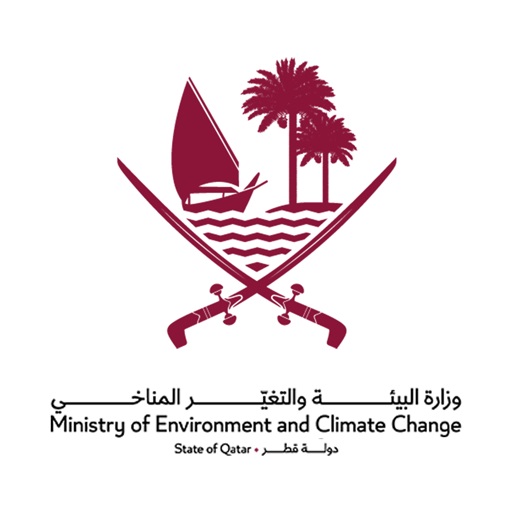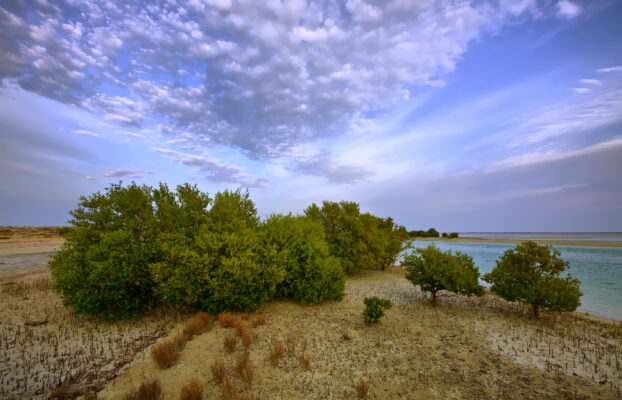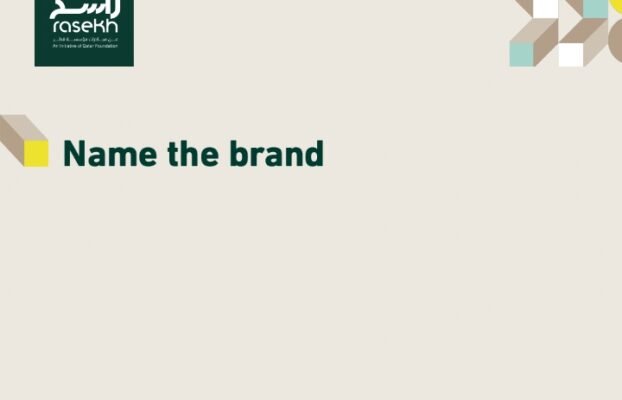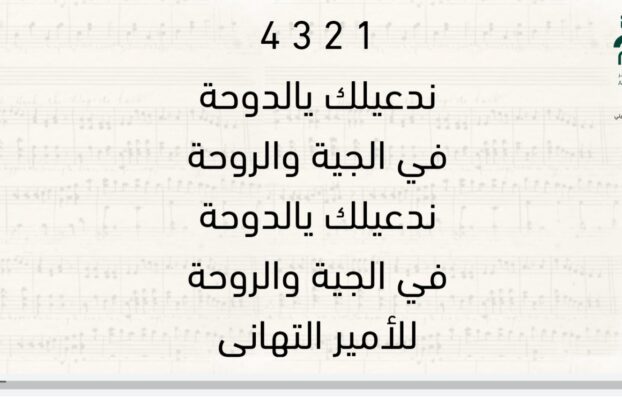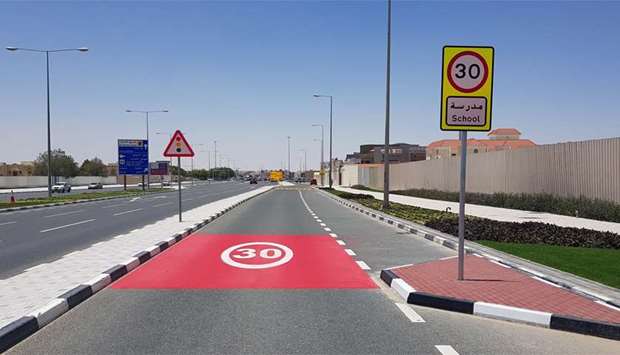Environmental Awareness
Air Quality Sustainability
-
Sustainability
-
Resource Plan
-
SDG 13: Climate Action, SDG 3: Good Health and Well-Being, SDG 7: Affordable and Clean Energy
-
15 - 16 years
-
Arabic, English, Geography, Maths
-
Resource ID: 17019
- Share Feedback Embed Resource
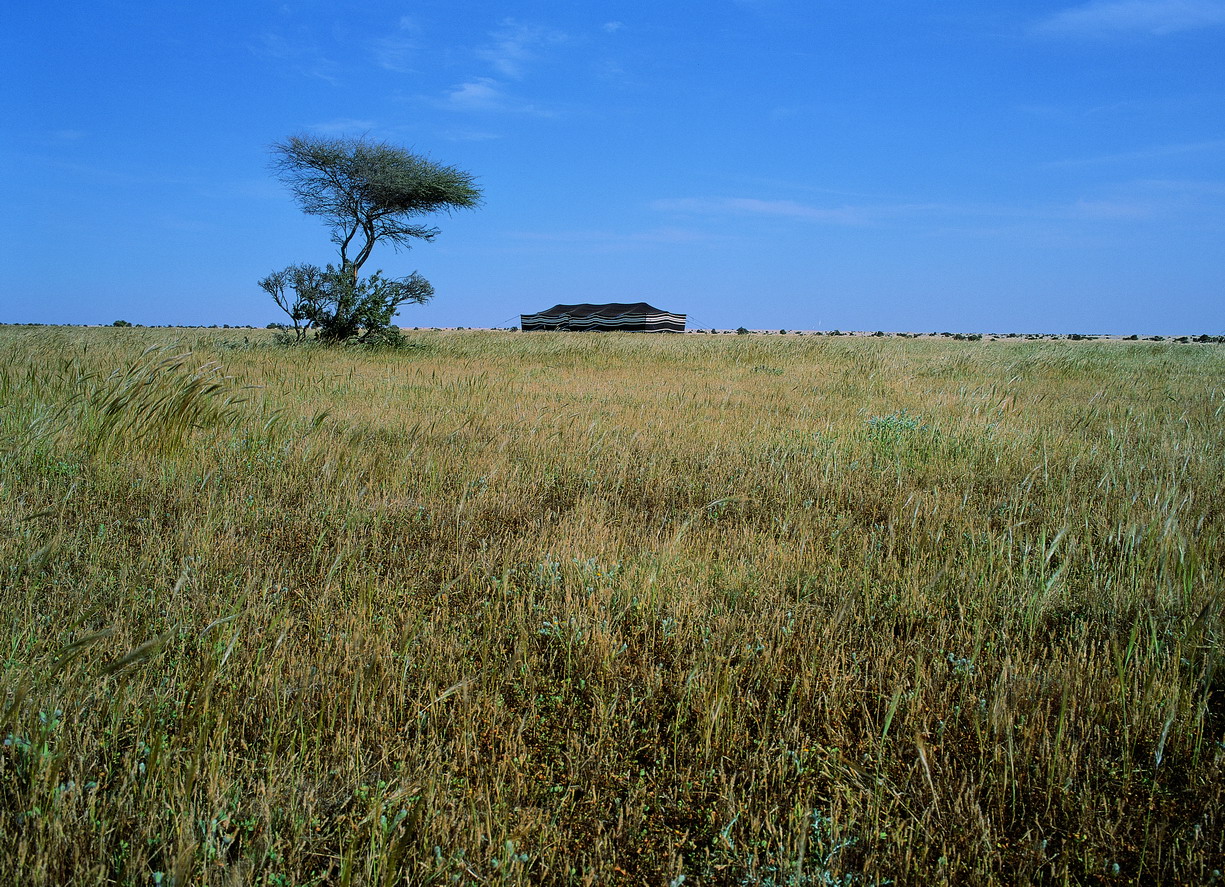
Overarching Goal(s)
- To equip learners with the knowledge, skills, motivation and understanding to demonstrate the importance of Glocalization as a sustainable model for learning.
- To inspire students to act sustainably from both local and global perspectives.
Learning Outcomes
- Learners develop lifelong skills which support their sustainable actions.
- Learners reflect on the impact of their actions and demonstrate their understanding of the action as related to sustainability.
Possible Duration (Hours)
7-8 hours
Sustainable Development Goals (SDGs) Connection
SDG 3: Good Health and Well-Being: This lesson tool demonstrates and makes connections to clean environmental areas where air pollutants are low, which promotes and sustains the good health and well-being of citizens, residents, and visitors in Qatar.
SDG 7: Affordable and Clean Energy: Solutions such as electric cars, and solar panels throughout cities in Doha contribute to cleaner energy and sustainability.
SDG 13: Climate action: The statistical data demonstrates that climate action provides low levels of air pollutants throughout the cities to provide clean and sustainable environments.
The 17 Sustainable Development Goals
English: https://sdgs.un.org/goals
Arabic: https://sdgs.un.org/ar/goals
Source: United Nations (2024). The 17 Sustainable Development Goals. [online] United Nations. Available at: https://sdgs.un.org/goals
Action Learning Outcomes
- Learners become more aware of their own strengths and areas for growth.
- Learners undertake challenges that develop new skills.
- Learners persevere in action.
- Learners work collaboratively with others.
- Learners consider the ethical implications of their actions.
Content
The content of the lesson tool revolves around air pollutants and interpreting; analyzing air pollutants statistical data collated by the Ministry of Environment and Climate Change.
Resource Utilization and Identification: Ministry of Environment and Climate Change.
Subject Matter: Geographical locations in Doha, interpretation and analyzing data statistics, and Language(s).
Glocalization Connections: Kinds of pollution that exist locally and globally.
Differentiation: Word bank for lower to middle ability students in learning engagement one (if needed), task 5 in learning engagement 2. Group Task 4 in learning engagement 2 is recommended for the higher ability students.
Critical Thinking: Encourage students to analyze the implications of air pollutants that have on the environment and health, well-being and ways to sustain and contribute to cleaner, healthier cities.
Real-world Application: Students discuss and explain how we as responsible citizens are responsible for keeping our environment clean. Students are encouraged to suggest ways in promoting and sustaining clean air and energy locally and explore global influences.
Strategies
The strategies employed in this lesson tool are designed to foster analyzing, critical thinking, inquiry, collaboration, and innovative engagement. They include visible thinking routines, responsive pedagogy, and problem-solving approaches to adapt to students’ needs and encourage active participation. Students apply meaningful learning experiences that connect to the sustainability of air quality and clean energy in Qatar.
Responsive and Adaptive Pedagogy: Adjust the pace and level of guidance based on student responses and engagement.
Visible Thinking Routines: Implement the “Think-Pair-Share” is used as a collaborative strategy where students think independently, discuss and share their thoughts. .
Inquiry: Encourage students to inquire about the significance of the statistical data for air transporters, travelers, residents and visitors.
Collaboration: Facilitate a class discussion forum where students can share and compare their perceptions, promoting collaboration and the exchange of diverse perspectives.
Assessment for and as Learning: Use formative assessments for student responses and presentations.
Problem-Solving: Ask students to identify and propose solutions to challenges in climate and environmental surroundings.
Learning Experiences
Learning Engagement 1: Understanding the Impact of Air Pollution
Learning Objective: To Understand the Impact of Air Pollution
Introduction and context setting
Students will use the ‘Think-Pair-Share’ strategy allowing students to think independently, discuss and share their thoughts with their peers by collaborating on the topic of air pollutants.
Think – What are the forms of air pollutants? How do they affect our health and environment?
Pair – Discuss your thought responses together, taking turns. Feel free to add any new suggestions.
Share – Share some responses with the class. Do air pollutants differ locally or globally? Explain which air pollutants might be more common globally and locally, and what might be the cause of this.
Reflection:
Students will share some of their responses with the rest of the class, and note down their reflective responses in their notebooks.
Activity: Air Pollutants Quiz
Resource 1: Air Pollutants Quiz: https://rasekh.qa/wp-content/uploads/2024/07/Air-Pollutants-Quiz.pdf
The teacher will provide the Air Pollutants Powerpoint Quiz, Resource 1, to the students as a Google classroom task, or other classroom platform used to assess student responses. The teacher will provide the students with sufficient time (10-15 minutes) to answer the questions individually. The students will test their knowledge and understanding. Then the teacher will ask the students to evaluate their responses with another student, and where the students have different answers, the teacher will guide the students to discuss and justify their answers collaboratively.
Differentiation
The teacher will provide the word bank for students who require additional support to fill in the missing blanks on slide 4 of the quiz task.
Word bank: carbon, dioxide, dust, gaseous, invisible, odorless, pollution
Reflection
The teacher will then ask students to share their responses with the rest of the class, and the teacher will go through the correct responses emphasizing on specific answers that require clarification or more explanation.
Powerpoint correct responses are as follows: 1A, 2E, 3 (in order: gaseous, pollution, dust, invisible, odorless, carbon, dioxide), 4A, B and E, 5A, 6C.
Learning Engagement 2: Interpreting and Analyzing Air Pollutants Statistical Data
Learning Objective: To Interpret and Analyze Air Pollutants Statistical Data
Starter Activity
The teacher will ask the students to recap their knowledge and understanding from the previous lesson by asking the students to explain the two forms of air pollutants, and to provide specific examples.
Activity: Interpret, Analyze and Compare Environmental Statistical Data
Resource 2:
Chapter XI: Environmental Statistics, 2021 source Ministry of Environment and Climate Change: https://rasekh.qa/wp-content/uploads/2024/07/Environment_11_2021_AE.pdf
Resource 3:
Chapter XI: Environmental Statistics, 2022 source Ministry of Environment and Climate Change: https://rasekh.qa/wp-content/uploads/2024/07/Environment_11_2022_AE-.pdf
Instructions
The teacher will provide each small group of students with a digital copy of Resource 2 and 3, promoting and encouraging sustainability contributions to our environment.
If there is a real need to print the resource, only print the mentioned page for each group task. Ensure each group has a different task accordingly.
The teacher will explain to the students that each group will be distributed a task, and each group will be analyzing and interpreting air pollution environmental statistics from Resources 2 and 3. Each group of students will compare the data from the pages allocated to produce a visual and creative presentation and research an Islamic or local cultural connection that provides contributive and responsible actions to care and preserve the environment in Qatar. This presentation will be presented to raise environmental and health awareness for other students in their school, and in their local community.
Group Task 1
This group will analyze and interpret the Average monthly Air Pollution Indicator, statistical table 237, on page 7 from the resource of Movenpick (Al Corniche) area, 2021; 2022 documents. The students will create bar charts to represent and compare the air pollutant data to compare both years, and they will need to use a color key code to represent the description of the Air Pollutants indicator. The students will present their data visually as a poster presentation or Powerpoint using Microsoft Excel to create bar charts. The students will include these charts in their Powerpoint Presentations. The students in this group must also explain in their own words what the data shows and what positive measures has Qatar taken to provide positive outcomes; what Islamic/local cultural evidence is connected to demonstrate our responsibility towards caring and preserving the environment.
Group Task 2
The teacher will explain to the students that they will analyze and interpret the Average monthly Air Pollution Indicator, statistical table 238, on page 9 from the resource of Qatar University area, 2021; 2022. The students will create bar charts to represent the air pollutant data to compare both years, and they will need to use a color key code to represent the description of the Air Pollutants indicator. Students will present their data visually and creatively as a poster presentation or Powerpoint using Microsoft Excel to create the bar charts. The students will include these charts in their Powerpoint Presentations. The students in this group must also explain in their own words what the data shows and what positive measures has Qatar taken to provide positive outcomes; what Islamic/local cultural evidence is connected to demonstrate our responsibility towards caring and preserving the environment.
Group Task 3
The teacher will explain to the students that they will interpret and analyze the Average monthly Air Pollution Indicator, statistical table 239, on page 10 from the resource of Aspire Zone area, 2021; 2022. The students will create bar charts to represent the air pollutant data to compare both years, and they will need to use a color key code to represent the description of the Air Pollutants indicator. Students will present their data visually and creatively as a poster presentation or Powerpoint using Microsoft Excel to create the bar charts. The students will include these charts in their Powerpoint Presentations. The students in this group must also explain in their own words what the data shows and what positive measures has Qatar taken to provide positive outcomes; what Islamic/local cultural evidence is connected to demonstrate our responsibility towards caring and preserving the environment.
Group Task 4
This task is recommended for higher ability students. The teacher will explain that for this task the students will need to analyze and collate the Percentage Distribution of Daily Monitoring of all three areas: Movenpick (Al Corniche), Qatar University and Aspire Zone tables 240 – 242, on pages 11-13 from both Resource 2 and 3 documents – 2021;2022. They will create visual pie charts to represent and compare the three areas and both years that demonstrate the indicator description percentage. For example: sulfur dioxide 100 per cent clean. Students will present their data visually and creatively as a poster presentation or Powerpoint using Microsoft Excel to create the pie charts to compare the data. The charts will be included in their Powerpoint Presentations. The students in this group must also explain in their own words what the data shows and what positive measures has Qatar taken to provide positive outcomes; what Islamic/local cultural evidence is connected to demonstrate our responsibility towards caring and preserving the environment.
Group Task 5
This task is appropriate for the lower/middle ability students.
The teacher will explain that this group of students will interpret and analyze the Annual Average Air Quality for all the three areas: Al Corniche, Qatar University and Aspire Zone, statistical table 236 of Resource 2 and 3. The students will create bar charts to represent the air pollutant data to compare both years, and they will need to use a color key code to represent the description of the Air Pollutants indicator. Students will present their data visually and creatively as a poster presentation or Powerpoint using Microsoft Excel to create the bar charts. The students will include these charts in their Powerpoint Presentations. Students in this group must also explain in their own words what the data shows and what positive measures has Qatar taken to provide positive outcomes; what Islamic/local cultural evidence is connected to demonstrate our responsibility towards caring and preserving the environment.
Reflection/Action
Students in each group will prepare at least five significant tips that they would like to share with other students to promote clean air and energy. Each group will be designated by the teacher to present their presentations to another grade level or school assembly to promote environmental awareness, and the students will share their useful tips at the end of their presentations. In addition, the students will be encouraged to share these positive contributions to care and preserve our environment with their family members and local community.
Checking for Understanding
Learning engagement 1: Understanding the Impact of Air Pollution
Check understanding from Air Pollutant Quiz student responses.
Learning Engagement 2: Interpreting and Analyzing Air Pollutants Statistical Data
Check understanding from student presentations; bar/pie chart(s) are accurate and provide the required data, colored key code and headings.
Differentiation:
The lower ability students can be provided the word bank in Activity 1, if needed.
The higher ability students are recommended to tackle Group Task 4 challenge in Learning Engagement 2 Activity, and Group Task 5 can be provided for the students who require additional learning support.
Key Vocabulary
air, air quality, ash, carbon monoxide, climate, dirt, dust, environment, gaseous, ground level ozone, nitrogen dioxide, ozone, particulate matter, particles, pollen, pollutants, pollution, smog, sulfur dioxide
Resources
Resource 1: Air Pollutants Quiz: https://rasekh.qa/wp-content/uploads/2024/07/Air-Pollutants-Quiz.pdf
Resource 2: Chapter XI: Environmental Statistics, 2021 source Ministry of Environment and Climate Change: https://rasekh.qa/wp-content/uploads/2024/07/Environment_11_2021_AE.pdf
Resource 3:
Chapter XI: Environmental Statistics, 2022 source Ministry of Environment and Climate Change: https://rasekh.qa/wp-content/uploads/2024/07/Environment_11_2022_AE-.pdf
Supplementary resource:
Qatar National Development Strategy, 2011-2016 Document, Pages 221-224, Cleaner air and effective climate change responses: https://rasekh.qa/wp-content/uploads/2024/07/Qatar-National-Development-Strategy-2011-2016-.pdf
Resource Publisher
Ministry of Environment and Climate Change
The Ministry of Environment and Climate Change is a service ministry that specializes in achieving many goals, foremost of which is protecting the environment, preserving its resources and reducing emissions that cause climate change.
